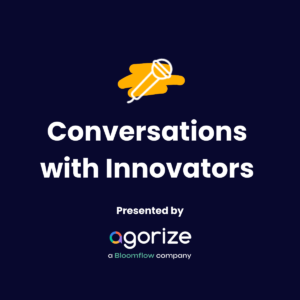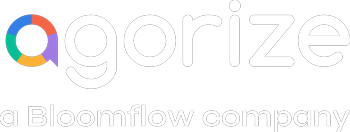The talent war is raging on. And on this particular market that is employment, high standard candidates are gold and companies are ready to do anything to recruit them in order to boost their employer brand.
It’s no secret, job market undergoes profound change: a permanent rise of passive job seekers which represents two thirds of executives, growing appeal for self-employment, working atmosphere in startups and above all, millennials arrival are changing the game.
Millenials will represent three out of four employees in 2025 and a significant part of them is trying to build their own career path! 67% affirm considering to launch their own company, no need to say that their working relationship and their expectations differ from their elders.
In order to accelerate talents hiring process, employers have to catch up by setting up innovative hiring methods so that talented workforce don’t fly away.
It’s not about looking for and keeping the greater candidates but also and above all ensuring that you highlight the best of oneself.
Here is our ranking of the hits and misses of recruitment in 2018.
No.6 – Chatbots
Chatterbot, intelligent robot or ‘chatbot’, chances are that you already felt lost in this jargon, nothing to be ashamed of, it’s a normal thing!
Since 2015, chatbots have invaded the web, particularly these experiential chatbots specialized in talents hiring process. For instance, Jobpal, is a chatbot aiming to help recruiter saving time when it comes to job interviews. 3 questions are all it needs.
Throughout several solutions available, we find ‘3X Consultants’ bot messenger which allows verifying candidates’ matching with company’ culture. If these tailored solutions represent the first level of information and help recruiter in their process, they couldn’t substitute human being.
Talents hiring is, first of all, a conversation.
It is obvious that bots will never replace human interactions because of what they offer: a whole range of possibilities and emotional shades (corporal language, teasing…)!
Furthermore, these tools also pose an ethical’s question, enclosing candidates in “boxes” and setting aside those who have an atypical profile or career and who could sometimes be more motivated. Regrettable you will agree, at a time when more and more companies want to diversify profiles of their employees. Conclusions? Forget about chatbots to improve your employer brand.
No. 5 – Hiring through serious game
Serious Game (not to be confused with business game) is defined as “any game whose primary purpose is other than entertainment”.
Serious game consists in simulating real business life situation which could be encountered by the candidate if he was hired.
It takes the form of a video game or immersion in virtual reality. Recruiters analyze and evaluate his/her reactions and behavior to judge a candidate’s abilities.
This practice is generally used by large CAC40 groups such as Renault and Total for professional training purposes. It allows learning in a more playful, less vertical and hierarchical way, which leaves more autonomy to the collaborator than a classical training. Nevertheless, the very high costs (between € 75,000 and € 150,000), the strong involvement and mobilization of HR managers that is required make serious games often unprofitable.
In addition, in the era of ultra-realistic video games and design, your serious game may pale in comparison. Another disadvantage, keeping a good balance between the fun and educational aspect is tricky: you may end up with a game very playful but inefficient to evaluate and select the talents or get a very effective game to decide among the candidates, but very boring.
No. 4 – Recruiting through forums
Let’s set the scene for a recruitment forum: you’ve received the tradeshow plan a week before the event, you learned about the layout of your 12m2 and improvise an installation composed of your high bar table, your two high stools, your flyers and kakemono the same morning at 8:30.
Until proven otherwise, you are neither a unicorn or an award-winning startup (not yet!). And you will have to be truly creative (with a lot of interesting goodies) to attract and optimize the recruitment of talent.
Nobody can reasonably say that multiplying interviews and candidates is the best way to proceed when it comes to talent recruitment.
Qualities, flaws, identical outfits, and postures, you’re in a bad remake of Groundhog Day, with an unbearable hubbub on soundtrack. In short, despite an impressive resume collection you are not convinced to have found your top talent.
This Hollywood scenario does not come from nowhere but is well and truly inspired by what many HR managers have been able to experience. Recruitment shows have two major disadvantages:
- They are localized. Scope and participation are reduced, and the talents that will transform your business come from everywhere.
- The candidates are uniform. Same profiles, even from business schools. In such a context, the war for talents could almost be likened to a clone war (are you a Star Wars fan?). As a result, the selection of candidates is largely based on the ranking of their schools, which automatically eliminates the possibility of finding promising talents from less prestigious schools or universities. Talks in trade shows (or elsewhere) are also mostly focused on the past rather than the future. The interview focuses on diplomas, professional experiences. The stakes of tomorrow will be little discussed. How to discern a good from a less good candidate if one does not have a glimpse of how it would tackle challenges, corporate missions and the long term vision?
Finally, another disadvantage of the show: it is difficult to reveal the true culture of the company. And, no, a foosball and a ficus are not enough to reveal who you are and increase your employer brand.
No. 3 – Recruiting via social networks
In 2018, 75% of recruitment actions are identified on Linkedin. In fact, France is the fastest growing user country in Europe, registering an increase of 5 million members in just two years. And let it be said, the trend is not ready to stop!
So in this context, how to forget the superstar of talent recruitment? Linkedin is the recruiters’ tool of choice when it comes to talent’s identification: a real online showcase, the platform offers more and more features to optimize talent recruitment processes. The hunt for HR managers can not be limited to candidates seeking active positions.
Now, on a simple injunction of the social network, employees can activate a notification to recruiters indicating that they are open to various proposals. Which undoubtedly makes Linkedin the most suitable field for the passive search of candidates. To attract these “submarine” profiles, be careful about your employer brand!
Recall that according to a recent LinkedIn study, 83% of employees say they listen attentively to job offers: by crossing this data with a study signed by CarreerBuilder it follows that three quarters of employees say they are open to a new position only a few weeks after having accepted theirs.
Is schizophrenia would look out for the job market? Let’s face it, with the arrival of the Generation Z on the market it is likely that the trend is not reversed, which also means that everyone (employee or not) is a potential candidate (let’s see things on the positive side!).
Shapr, LikeLunch, Jobr and others:
Halfway between Tinder and Linkedin, the development of applications such as Shapr is symptomatic of a paradigm shift in the world of recruitment and job research.
The Parisian startup has cleverly interfered on the niche of the networking social media by taking the codes of dating application (consumption pattern of Y and Z being surely responsible for something!). An interesting market to invest when you know that 70% of recruitments are done by cooptation.
Since its launch, the app has allowed more than 3 million meetings and France is the second market behind the United States with 25% of users.
At the crossroads of the world of dating and professional encounters, we find common denominators: swiping, matching, selection of the most interesting profiles, chat interface…
With the arrival of its paid version and with more than 2000 new daily users, Shapr has indeed encroach on the lands of Linkedin and Viadeo. The app can now control its geo-tracking, offer more profiles every day, search for a specific profile … The algorithm has also been improved on a principle of machine learning to optimize the process of selection and matching.
A solution to keep in mind to humanize recruitment and penetrate the hidden job market while targeting broad: remember that the average age of users are between 22 and 55 years.
No. 2 – Investing in mobile recruitment
2016 marked the year when mobile searches for the first time exceeded desktop searches.
So, Mobile First or Mobile Only? The debate remains, which leaves no doubt on the other hand is that recruiters must invest the mobile without fail.
78% of candidates are ready to apply via their smartphone or tablet which confirms that m-recruitment has already become a technological issue and a change of use.
Quite often, candidate use their phone to access job offers, consult them, sort them and inevitably send them by email because they can not apply directly. Reasoning in terms of use can therefore make you do one step ahead of your competitors.
A range of solutions is offered to you when it comes to m-recruitment: adaptive design, responsive design, mobile site, apps … Do not deprive yourself of part of the market for a simple technical omission!
Among the good students of mobile recruitment, here is a French ranking that should inspire you, we find:
- Orange
- French National Marine
- French Army
- EADS (Airbus)
- Societe Générale
The reasons why these companies are in the top 5? They have simplified the application process while saving candidates some time. At the time of digitalization and over-solicitation of web users: available brain time has become the new black gold! At least your application process will be time-consuming, the more points you will score!
Simple. Basic.
Your employer brand will be boosted (in this regard, we wrote an article explaining how to attract, recruit and retain the most penurious profiles thanks to your employer brand!)
No.1 – Recruiting via open innovation challenges
There are several names to call open innovation challenges, several promises and several benefits.
But whatever the name (hackathons, innovation business games …) the idea of the open innovation challenge is to use collaborative innovation, to mobilize the creative power of innovators to respond to strategic issues of a company. It is a way for the latter to attract and identify the best talent.
An open innovation challenge will interrogate targeted population with a specific problem (often students), allowing them to present their innovative solutions through PowerPoint or video. An open innovation challenge takes place in 3 main phases:
- A phase of ideation ending with a first projects’ selection (say 50 out of 150 for example)
- A phase of deepening: the selected teams have the opportunity to develop their projects. Eventually, a new selection takes place (5 teams out of 50 pre-selected for example).
- The final during which the finalists present their projects to the top management of the organizing company.
The objective is to test the technical skills (hard skills) and the soft skills of the participants before proposing positions to the best performers.
Why is the participatory innovation challenge, in our opinion, the best way to recruit? Because in addition to accelerating your approach to innovation around key themes for your organization, it can recruit the best elements that participated in the challenge.
The challenge reveals the talents: teams of 2 to 4 people who have worked together in depth on an innovative solution have the opportunity to stand out and put their talent and ideas ahead. By having worked on the key issues of the company, participants discover the values, trades and projects of the organizing company. The number of recruitments after a challenge is between 4 and 6 on average. Last lever of action, the challenge of open innovation is a great tool to boost your employer brand.
To conclude
While each method obviously has its pros and cons, it must be kept in mind that standing out in this quest for talent is not easy.
Among all the advice that we have been able to give you, do not forget that the best attack is often defense and that it could contribute to make you “win” this war. A word of advice, do not skimp on the definition of a clear strategy of retention and management of talents and know how to opt (or mix) the different solutions listed to make the most of their profits.
However, the challenge of open innovation remains the most comprehensive lever to achieve your goals.










